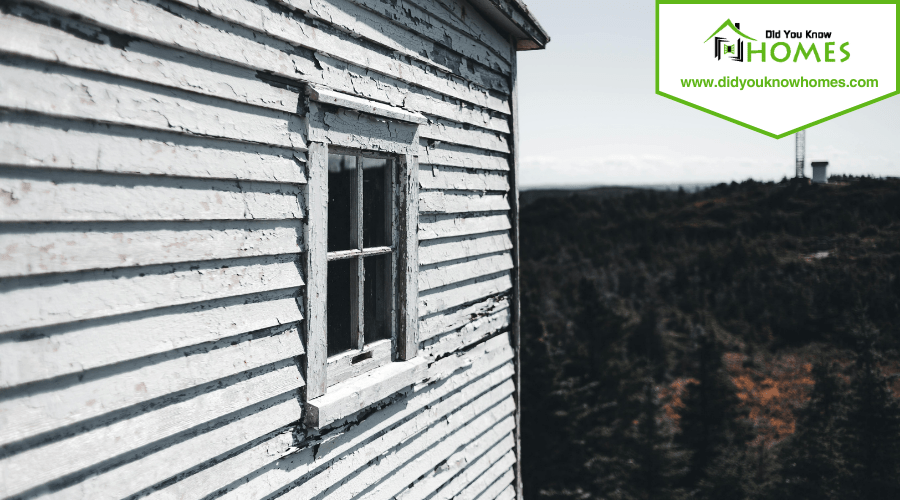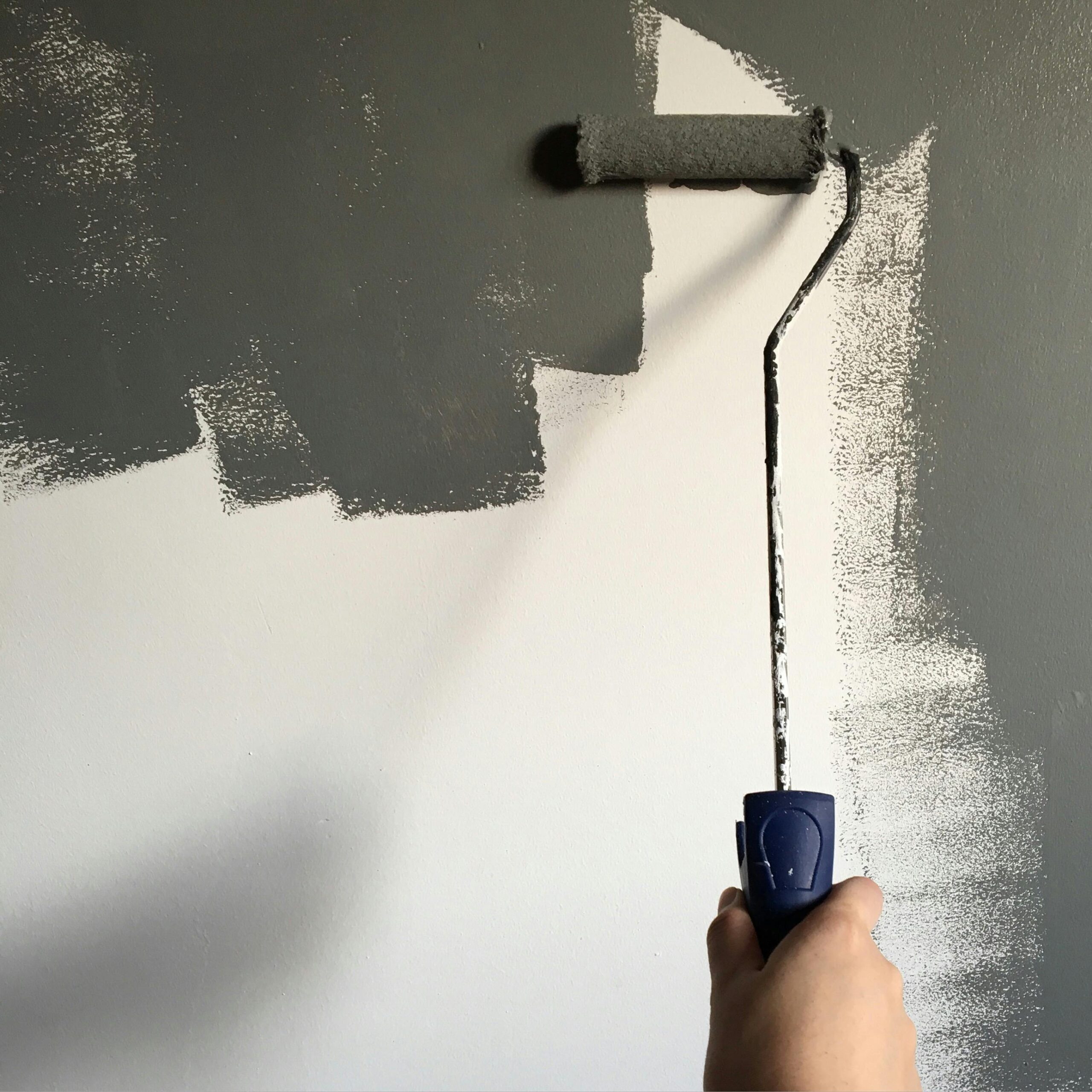Before you repaint an older home, address lead paint risks head-on. If your home was constructed before 1978, it might contain lead-based paint. First, have a professional inspect it; they utilize tools like XRF analyzers for accuracy. Keeping lead out of the air is crucial. Safely scrape off old paint by hand and avoid power washing—it spreads lead dust. Use wet sanding for less mess and make sure you properly dispose of the waste. Remember, following EPA’s Lead Safe RRP guidelines is mandatory for contractors. Choosing the right, lead-free paints and safe methods will make your home safer. Explore more on ensuring your home’s safety and preparing properly for that fresh coat of paint.
Key Takeaways
- Conduct a lead paint inspection using professionals or XRF analyzers to accurately identify lead presence.
- Follow EPA’s Lead Safe RRP guidelines, ensuring all work practices minimize lead exposure.
- Use safe removal techniques such as hand scraping or low-heat stripping to avoid spreading lead dust.
- Contain and properly dispose of lead-based paint and debris to comply with health and environmental standards.
- Before repainting, choose lead-free, low VOC paints to ensure a safer environment post-renovation.
Identifying Lead Paint
Before approaching a repainting project in an older home, it is essential to first identify whether lead paint is present. You’re dealing with homes built before 1978, and there’s a high chance they’ve got lead-based paint on their walls. This isn’t just a box-ticking exercise; it’s about keeping everyone safe.
The first step is to get a lead paint inspection. This isn’t a DIY job; you need professionals who know what they’re looking for. They’ll use testing methods that are both sophisticated and accurate, ensuring no stone is left unturned. One of the most reliable tools in their arsenal? XRF analyzers. These devices can detect lead content without damaging your walls, giving you a clear picture of what you’re up against.
Understanding if and where you have lead paint is key to planning your renovation or repainting project. It’s not just about aesthetics; it’s about making your home safe and lead-free. So, don’t cut corners. Make sure you’re fully informed before you pick up a paintbrush. Your home, and your health, deserve that level of care.
Health Risks Explained
You need to be aware of the health risks associated with lead paint in your home. Lead exposure can cause serious symptoms, especially in children and pregnant women, ranging from developmental delays to severe neurological damage. Understanding these risks and the long-term effects is key to protecting your family’s health.
Lead Exposure Symptoms
Understanding the symptoms of lead exposure is essential for protecting your health and well-being. Lead poisoning is a severe issue, especially in older homes where lead-based paint may still be present. It’s vital to be aware of the signs that indicate lead poisoning to take immediate action.
| Age Group | Symptoms | Potential Long-term Effects |
|---|---|---|
| Children | Developmental delays, learning difficulties, behavioral issues | Brain and nervous system damage |
| Adults | High blood pressure, anemia, nerve disorders | Kidney damage, neurological effects, fertility issues |
| Both | Anemia, high blood pressure, nerve disorders | Significant health complications |
The symptoms, ranging from high blood pressure and anemia to developmental delays and behavioral issues, underscore the urgency of addressing lead exposure in your home.
Vulnerable Populations Identified
Recognizing the symptoms of lead exposure is essential; now let’s identify who’s most at risk and understand their health challenges. Children top the list, as they’re more prone to lead poisoning due to their hand-to-mouth habits and their bodies absorb lead more readily. This can result in developmental delays, learning difficulties, and behavioral issues. Adults aren’t spared either; they might face anemia, fertility challenges, high blood pressure, memory problems, and joint pain due to lead exposure. Both groups could suffer from kidney damage, nerve disorders, hearing issues, headaches, and bone marrow complications. Additionally, soil contamination around old homes poses additional risks, making it clear that tackling lead paint isn’t just a renovation task—it’s a health priority.
Long-Term Health Effects
Exposure to lead paint can have severe long-term health consequences, including developmental delays and kidney damage. When you’re dealing with older homes, understanding the risks of lead paint chips and lead dust is essential. Children face the highest risk, suffering from slowed growth and learning problems. For adults, the stakes are high too, with anemia and memory issues on the line.
Lead hazards aren’t something to ignore. Deteriorating paint releases harmful lead dust, and merely living in such an environment can elevate lead levels in your body. Don’t wait for symptoms to appear. Conduct lead tests regularly and if you find high levels, act swiftly in removing lead from your home. It’s not just about repainting; it’s about safeguarding your health and future.
Regulatory Guidelines
Traversing the maze of regulatory guidelines is essential before you repaint an older home, especially those constructed prior to 1978, to prevent lead exposure risks. You’re not just slapping on a new coat of paint; you’re safeguarding health and guaranteeing compliance with strict standards. Start with a lead analysis. This isn’t optional. Regulatory guidelines mandate it to protect you and future inhabitants from the dangers of lead exposure.
Contractors, you’ve got a playbook to follow: the EPA’s Lead Safe RRP guidelines. They’re there to make sure you’re not just guessing how to handle lead but are taking informed, safe steps to mitigate risks. And let’s not forget about OSHA regulations. They’re in place to protect you, the workers, from lead exposure during these projects.
Ignoring these guidelines isn’t just irresponsible; it can hit you where it hurts—your wallet. A home’s market value can plummet if lead-based paint issues are ignored or mishandled. Plus, you’ll be on the wrong side of environmental standards and regulatory compliance. Proper disposal of lead-based paint is part of these guidelines, ensuring you’re respecting both health and environmental standards.
Professional Testing Methods
To accurately detect lead in your home’s old paint, professionals often use X-ray fluorescence (XRF) analyzers. These specialized tools allow certified professionals to provide accurate results quickly, identifying any lead hazards lurking beneath layers of paint. If you’re living in a house built before 1978, lead paint testing becomes essential before undertaking any repainting projects.
Hiring professionals for lead paint inspections is a wise move. They come equipped with the knowledge and tools necessary to conduct thorough testing. XRF analyzers, in particular, are renowned for their ability to deliver fast and precise assessments of lead presence. This method stands out among professional testing methods for its reliability.
When you’re considering repainting, understanding the importance of professional lead testing cannot be overstated. Certified professionals can spot lead hazards that you might overlook. By hiring professionals for this task, you’re not just ensuring accurate identification; you’re also taking a significant step towards safeguarding your family’s health. Remember, tackling lead paint is not just about aesthetics—it’s about creating a safe living environment. So, don’t cut corners. Opt for professional testing methods to get the job done right.
Safe Removal Techniques
After identifying lead in your home’s paint, it’s important to focus on how you’ll safely remove it. The safest route is hand scraping. It minimizes the risk of lead dust spreading, making sure you aren’t breathing in harmful particles. Avoid power washing; it’s tempting for a fast clean, but it can scatter dangerous lead particles far and wide.
Low-heat stripping, using methods like infrared or chemical stripping, offers a safer alternative. These techniques help peel away lead-based paint without the high temperatures that can release toxic fumes. Plus, they’re less likely to turn the paint into airborne dust.
When it comes to smoothing surfaces, wet sanding is your go-to. Paired with a HEPA vacuum, it captures lead particles before they escape into the air, keeping your workspace clean and safe. Remember, the key to a successful lead paint removal project lies in proper containment and disposal. Seal off work areas to prevent contamination of the rest of your home and make sure all lead-containing materials are disposed of according to local regulations. This approach protects not just your family, but the environment too.
Repainting Considerations
Before you brush on that first coat, you’ve got to know what’s beneath. Detecting lead paint and preparing safely are your top priorities, ensuring you’re not kicking up toxic dust. Then, selecting paints that won’t bring those problems back is essential; choose wisely to keep your home safe.
Lead Paint Detection
Determining whether your older home has lead paint is a crucial first step before starting on any repainting project. If your house was built before 1978, there’s a good chance it might contain lead paint, making detection essential for safety and legal compliance. You’ve got options for testing: DIY test kits, professional inspections, or X-ray fluorescence analysis. DIY test kits, like 3M’s LeadCheck swabs, offer immediate results, allowing you to quickly identify lead presence. However, for more thorough detection, hiring certified professionals is your best bet. They use advanced techniques to guarantee accurate identification of all lead hazards. Remember, knowing if there’s lead paint is not just about aesthetics—it’s about keeping everyone safe.
Safe Preparation Methods
Once you’ve confirmed the presence of lead paint in your home, it’s vital to choose safe preparation methods for repainting.
| Method | Benefit | Key Tool |
|---|---|---|
| Hand Scraping | Safest for lead-based paint removal | Scraper |
| Low-Heat Stripping | Avoids harmful fumes | Infrared Stripper |
| Wet Sanding | Minimizes dust exposure | HEPA Vacuum |
| Containment | Prevents spread of lead dust | Plastic Sheeting |
| Disposal | Ensures safe removal of waste | Sealable Bags |
Avoid sanding due to the risk of lead dust. Instead, opt for methods like hand scraping or low-heat stripping. When necessary, use wet sanding alongside a HEPA vacuum to keep the area clean. Always prioritize containment and proper disposal to safeguard your health and environment.
Choosing Safe Paints
After addressing the removal of lead paint safely, it’s equally important to choose paints that guarantee minimal health risks for your repainting project. Opt for water-based or acrylic paints instead of oil-based ones. These options not only guarantee a safer application but also help in preserving your home’s air quality. Look for lead-free paints that are certified by recognized organizations. This guarantees you’re using products that meet strict safety standards. Additionally, prioritize low VOC paints to minimize your exposure to harmful chemicals. Eco-friendly or green paints are also a great choice, as they’re formulated to be free of dangerous substances. Don’t hesitate to consult paint professionals at stores. They can guide you towards the safest options for your home, ensuring your repainting project is both successful and safe.
Preventing Future Issues
To prevent future lead paint issues in your older home, it’s vital to regularly inspect and maintain painted surfaces. Keep an eye out for any signs of chipping or peeling paint, as these can be gateways to lead exposure risks. Don’t wait until it’s too late; address deteriorating paint areas promptly to guarantee a safe living environment.
Make it a habit to clean painted surfaces and floors weekly. This dust control measure is pivotal in reducing the potential for lead hazards. Remember, knowledge is power. Educate yourself on lead-safe work practices for proper maintenance and prevention. You’re not just maintaining a house; you’re safeguarding your health.
Sometimes, the best step is to bring in the experts. Consider a professional evaluation and testing for lead paint to get ahead of any hidden dangers. Certified professionals can offer peace of mind by identifying and addressing potential lead hazards before you repaint. Peeling paint isn’t just an eyesore; it’s a warning sign. By taking these proactive steps for inspection, prevention, and safe maintenance, you’re not just updating your home—you’re protecting its future.
Frequently Asked Questions
What to Do if Your Old House Has Lead Paint?
If your house has lead paint, start with lead testing. Use safety gear, follow legal requirements, and choose safe removal techniques. Understand health risks, cleanup procedures, environmental impact, and proper disposal methods to keep safe.
How Do Professional Painters Deal With Lead Paint?
Professional painters tackle lead paint by following legal regulations, wearing safety gear, and undergoing professional training. They employ containment methods, lead testing, and safe removal techniques while taking health precautions to protect everyone involved.
Can You Paint Over Old Lead Paint?
You can paint over old lead paint, but first, validate surface stability with testing kits. Always take safety precautions to minimize health risks and environmental impact. Follow legal requirements and prepare surfaces carefully to prevent issues.
How Do You Make a House With Lead Paint Safe?
To make a house with lead paint safe, start with lead testing. Use safety gear, improve ventilation, and relocate your family during the process. Follow proper cleanup practices, dispose of waste safely, and monitor health.
Conclusion
You’ve learned how to spot lead paint, understand its dangers, and navigate the rules. With professional testing, you can confirm its presence. Safely removing lead paint is key, and now you know the best techniques. When it’s time to repaint, choose wisely to avoid future worries. Remember, preventing lead paint issues starts with you. Keep your home safe and lead-free by staying informed, vigilant, and ready to act. Your family’s health is worth it.





